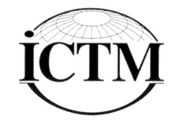 |
|||||||||||||||||||||||||||
 
the projectThis is the final volume of this series featuring Balinese music. The volumes of this series are part of a larger body of music from the largest Islamic country in the world, Indonesia. The name Kecak derives from the sound cak (pronounced chok) which is chanted in complex interlocking patterns similar to the rhythmic patterns played on the gamelan. The modern form of Kecak was created in the Gianyar village of Bedulu in the 1930s as the result of a commission by the German expatriate artist Walter Spies, wishing to create a performance event that could be enjoyed by a small coterie of expatriate artists, as well as friends and guests to the island. The modern performance of Kecak is a spectacular sight to behold. The chorus of chanting men has been enlarged to a hundred or more chanter/dancers, who sit in concentric circles around a flickering oil lamp at night. The chorus performs a highly–structured piece of vocal music of at least an hour in length. During the performance, the chorus may sing melodies derived from the Arja opera tradition. Tektekan was traditionally used to chase away malevolent spirits which were responsible for bringing disaster, such as illness or drought, to a village. The performance was thought to restore balance to the village and to bring about fertility. In addition, a Tektekan ensemble may be called for the ritual cleansing of an area where a new house is to be constructed. Today, the performance may be performed in ritual as well as secular contexts. The main instrument of the Tektekan ensemble is a type of bamboo slit drum which produces a tek sound when struck. The drummers direct the ensemble by cueing tempo and dynamic changes as well as transitions between sections. Cymbals are used to produce loud crashing sounds in interlocking rhythms. A complement of small and large gongs punctuate the rhythmic cycles. The musicians accent the performance with unison shouts. the artistsVolume three of this series features not just one, but two styles of music: Kecak and Tektekan. Kecak is a genre of Balinese vocal music performed by a large group of male chanters and Tektekan is a musical processional genre used in exorcistic rituals. Recorded at Pura Gunung Sari temple in Peliatan, Kecak is performed by the group Tojan under the leadership of Nyoman Sarma. Principal musicians featured are Gusti Bawa, conductor; Nyoman Sarma, narrator; and Wayan Jiwa, time keeper. Tektekan, recorded at Pura Penataran temple in Laplapan, is performed by the group Rama Budaya under the leadership of Made Ladra. Principal musicians featured are Wayan Wija, gong; Made Ladra, kendang; and Ketut Sena, suling. tracklist
Celestial Harmonies' catalogue of Indonesian recordings include:
|
|||||||||||||||||||||||||||
|
|
|||||||||||||||||||||||||||
 |



